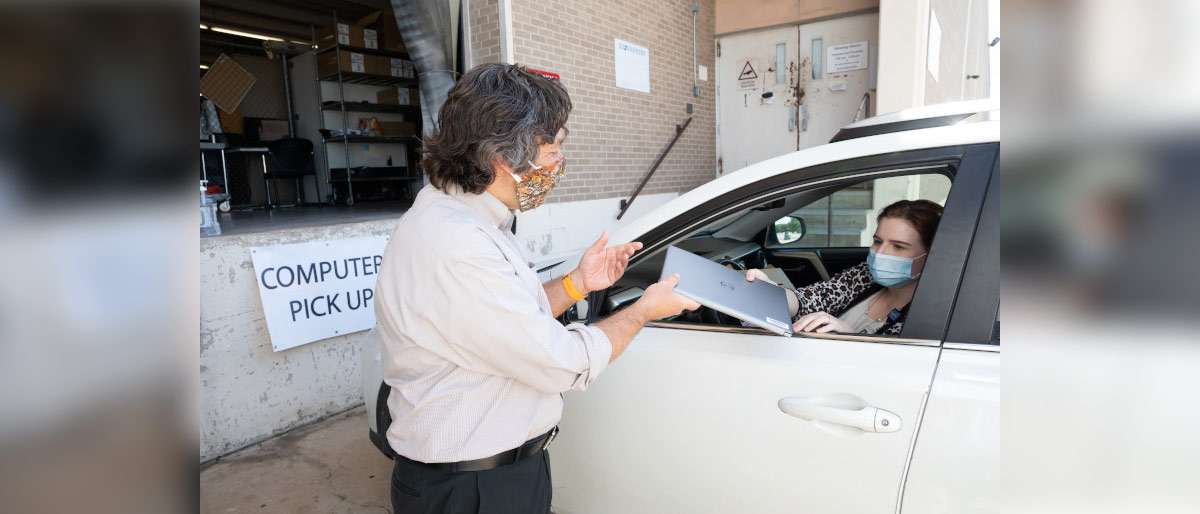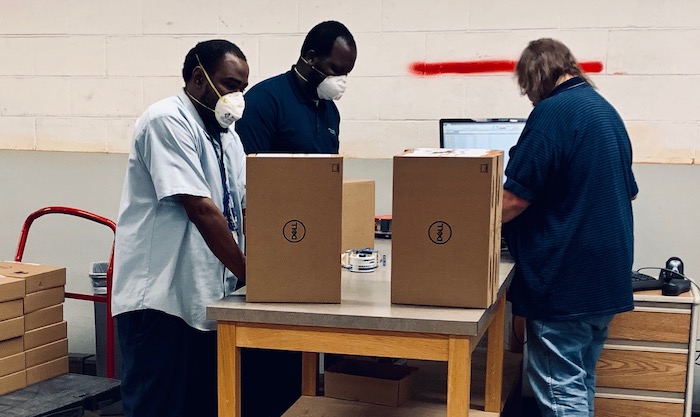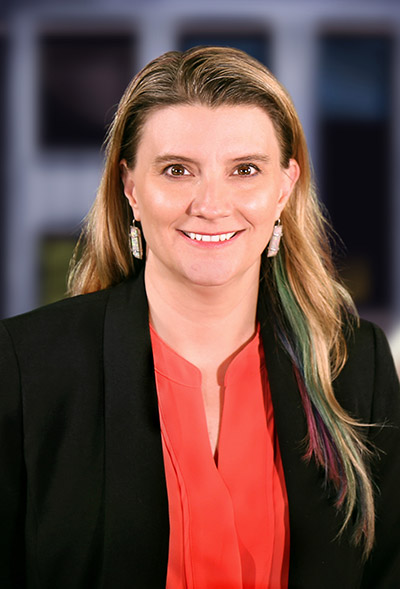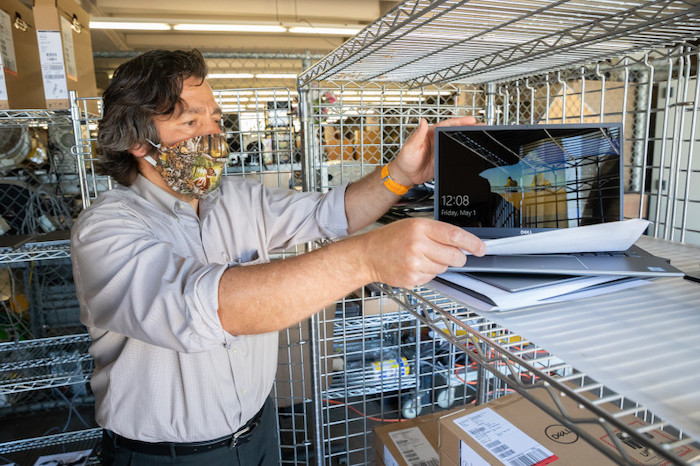Information Resources: Connecting thousands of dots in one week

The directive from leadership in mid-March was clear.
About 8,000 UT Southwestern employees would need to begin working from home in a matter of days as the campus and the community responded to the coronavirus pandemic. Information Resources quickly needed to ensure that the employees could make the move and stay connected, even though many had never worked remotely before.
Moving that many people off campus from a variety of roles in research, education, and administrative departments presented multiple challenges. Each worker would need the right equipment to do their job at home as well as training on new software tools. Behind the scenes, network capacity would have to be increased to provide access to UT Southwestern systems for everyone who needed it.
“If people had asked two months ago if it was possible to send thousands of people to work remotely in a matter of days, we would have said that you must first secure the approval, the budget, the governance, and so on,” said Heather Mishra, Associate Vice President of Academic and Administrative Information Resources. “Instead, we were told to just get it done. And we did.”
Accomplishing the feat required many IR employees to put in 16- to 20-hour workdays, she said. Some normal procedural requirements were relaxed to speed the transition.

Before employees received instructions to work from home and shelter-in-place orders were activated in Dallas, the Business Affairs and IR teams conducted a survey to evaluate what support would be needed. They found that about 1,400 employees were not equipped to work remotely – and others were only partially equipped. Capacity for thousands of additional network licenses were needed, and there was a huge learning curve ahead for nearly everyone.
Almost immediately, employees began calling with questions. On a normal day, the help desk handles 400-500 calls. On Tuesday, March 19, call volume spiked to 1,900 calls.
“Our help desk has been staffed to support a local population on campus during normal working hours. Now, people are working in home environments and have more flexible workdays – in some cases 7 a.m. to 9 p.m.,” said Dr. Thomas Spencer, Assistant Vice President of Academic and Administrative Information Resources.


Ms. Mishra and Dr. Spencer also began leading twice-daily webinars viewed by hundreds of employees, supporting a panel of subject matter experts. Common questions were compiled into informational tip sheets, then posted online along with detailed information on how to get set up, work remotely, and be successful in a remote work environment.
Reboot and Elevate
For the past two years, Business Affairs and IR have been updating UT Southwestern’s business processes through Project Reboot and Elevate. Much of that work had been completed, laying a foundation to meet the University’s business and academic technology needs during the COVID-19 crisis.
“I’ve spent the last year advocating for UTSW to use these new tools, Office 365 and Microsoft Teams, and now it’s happening at warp speed,” said Billy Stevenson III, a trainer with Dr. Spencer’s team who has been with UTSW for more than two years. “Before, we were preparing people for ‛someday’ scenarios. Suddenly the assignment became: The entire University needs it right now.”
In the past month, he has trained more than 2,800 employees in a virtual platform and helped move two conferences with hundreds of invitees to an online environment using tools such as Zoom and Microsoft Teams so they could take place as planned in late April and early May. Using existing tools saves both time and money. Mr. Stevenson compared it to looking in the toolbox to see what’s available before buying something new.
“Every day we find something more in the toolbox that we can use,” he said.
As many employees have discovered, secure access to the UTSW virtual private network (VPN) is essential to connecting with many aspects of UT Southwestern. This was another daunting challenge for the IR team.
During March, UT Southwestern added thousands of VPN licenses. Led by the IR Systems and Operations Group, the push bolstered the infrastructure backbone of the UT Southwestern network. “It would normally take the IR team four to eight weeks to set up a change of that magnitude; it was done within days, and was a task accomplished by teams across IR,” said Ms. Mishra.
According to Dr. Spencer, their Department is full of resourceful people. “I’m impressed with the highly creative people in IR who understand the importance of solving problems, and it would be impossible to list all of the amazing accomplishments over the last month,” he said.
Drive-up computer facility
In addition to improving connectivity and training staff in video conferencing, access to equipment has been the main challenge. There are two primary types of equipment – desktop computers and laptops. Finding the first proved easier than the second.
“It’s been really challenging,” said Adolfo Ortuzar, Director of Operations in Academic and Administrative Information Resources. “When the work remotely need was announced, companies across the world were in the same boat. Supply chains are stretched very thin, and we look for equipment everywhere we can find it.”

The UTSW team came up with a menu of options to meet demand. About 400 surplus computers from a variety of campus locations were retooled and sent home with staff. Some workers, with manager approval, loaded up their desktop computers and transferred them to a home office. Others offered to use their home computer. Laptops became such a hot commodity that some people gave up their UTSW laptop, using their personal laptop or desktop instead so another employee could have one.
To quickly get equipment to workers who needed it, a new drive-up facility was set up in a warehouse south of campus and is still meeting needs. This allows workers to pick up computer equipment by appointment in a setting safely removed from the patient care environment. Technicians wearing masks and gloves work to prepare equipment, sanitize it, and bring it out to the employee’s car. Only one staff member can pick up at a time.
Some of the changes that have been implemented are so appreciated that they could remain in use even after the pandemic ends.
“Through this we have created greater partnerships to solve the problems at hand. That’s a piece of this change that I’d like to keep,” Ms. Mishra said. “We are innovative and partner with businesses to help drive the missions of the institution forward.”
“Boundaries that existed just a few weeks ago have vanished. Everyone is working toward the same goals and working as a team,” agreed Dr. Spencer.
Now that IR has most people set up for telework, the team’s next focus is to help employees work more efficiently.
“We will continue to train, communicate, and support working effectively with these new tools,” said Mr. Ortuzar. “The way we communicate has changed. It’s not only about the technology, it’s about how we solve problems.”
“Knowing that my work in IR helps our health care workers to help patients is the joy of my job,” said Mr. Stevenson. “Delivering the future of medicine and the future of business and education – that day is here. We are delivering that future today.”

